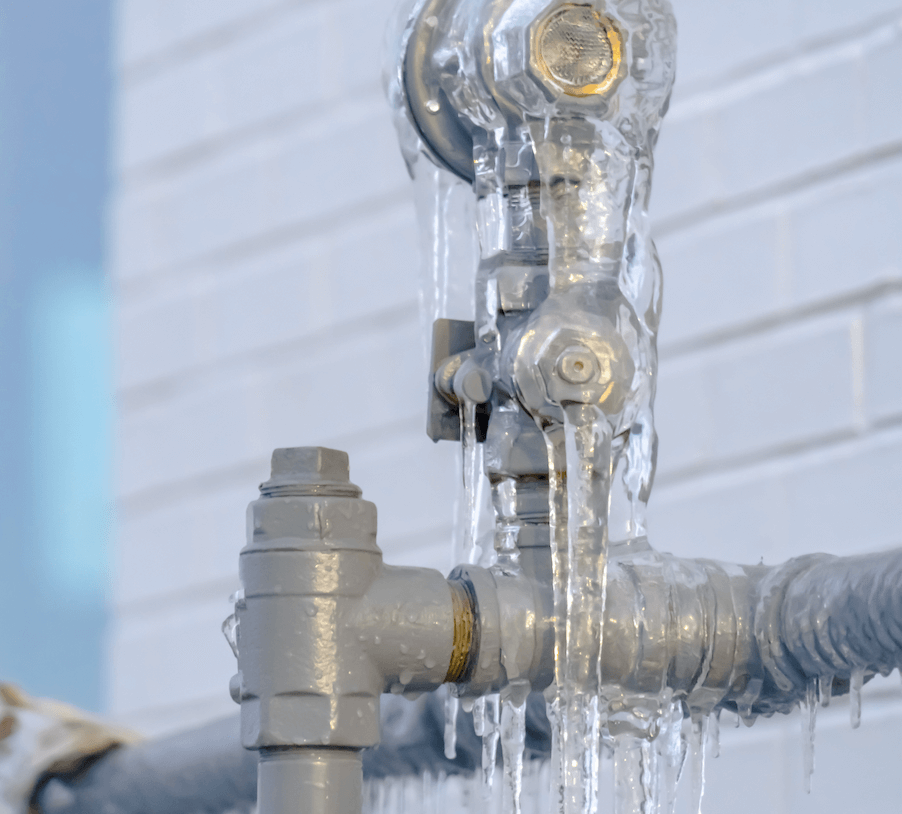Protecting Against Frozen Pipes in Winter: Critical Tips
Protecting Against Frozen Pipes in Winter: Critical Tips
Blog Article
In this article underneath you'll find more first-rate details involving How to prepare your home plumbing for winter weather.

Winter can wreak havoc on your pipes, especially by freezing pipes. Below's how to avoid it from happening and what to do if it does.
Intro
As temperatures decline, the risk of frozen pipes rises, possibly resulting in expensive repair services and water damages. Understanding how to prevent frozen pipelines is essential for home owners in cold climates.
Avoidance Tips
Insulating susceptible pipelines
Wrap pipelines in insulation sleeves or utilize warmth tape to safeguard them from freezing temperatures. Concentrate on pipelines in unheated or outside areas of the home.
Heating strategies
Maintain indoor areas sufficiently warmed, particularly locations with plumbing. Open closet doors to permit cozy air to flow around pipes under sinks.
How to recognize frozen pipelines
Try to find lowered water circulation from taps, unusual odors or sounds from pipelines, and visible frost on revealed pipes.
Long-Term Solutions
Architectural adjustments
Consider rerouting pipelines away from outside wall surfaces or unheated locations. Include extra insulation to attics, basements, and crawl spaces.
Upgrading insulation
Purchase top quality insulation for pipes, attics, and wall surfaces. Appropriate insulation aids keep regular temperature levels and lowers the threat of icy pipelines.
Shielding Outside Plumbing
Garden tubes and outdoor taps
Detach and drain yard hose pipes before winter. Mount frost-proof faucets or cover outdoor taps with protected caps.
Comprehending Frozen Pipelines
What triggers pipelines to freeze?
Pipelines freeze when exposed to temperatures below 32 ° F (0 ° C) for expanded periods. As water inside the pipelines freezes, it increases, putting pressure on the pipeline walls and potentially creating them to rupture.
Threats and damages
Frozen pipelines can bring about supply of water disturbances, property damages, and expensive repairs. Ruptured pipes can flood homes and cause extensive architectural damages.
Indications of Frozen Water Lines
Identifying frozen pipes early can prevent them from rupturing.
What to Do If Your Pipes Freeze
Immediate actions to take
If you presume frozen pipes, keep taps open up to relieve stress as the ice thaws. Utilize a hairdryer or towels soaked in hot water to thaw pipelines gradually.
Final thought
Protecting against icy pipes requires proactive steps and fast reactions. By recognizing the causes, indicators, and preventive measures, property owners can secure their pipes during winter.
5 Ways to Prevent Frozen Pipes
Drain Outdoor Faucets and Disconnect Hoses
First, close the shut-off valve that controls the flow of water in the pipe to your outdoor faucet. Then, head outside to disconnect and drain your hose and open the outdoor faucet to allow the water to completely drain out of the line. Turn off the faucet when done. Finally, head back to the shut-off valve and drain the remaining water inside the pipe into a bucket or container. Additionally, if you have a home irrigation system, you should consider hiring an expert to clear the system of water each year.
Insulate Pipes
One of the best and most cost-effective methods for preventing frozen water pipes is to wrap your pipes with insulation. This is especially important for areas in your home that aren’t exposed to heat, such as an attic. We suggest using foam sleeves, which can typically be found at your local hardware store.
Keep Heat Running at 65
Your pipes are located inside your walls, and the temperature there is much colder than the rest of the house. To prevent your pipes from freezing, The Insurance Information Institute suggests that you keep your home heated to at least 65 degrees, even when traveling. You may want to invest in smart devices that can keep an eye on the temperature in your home while you’re away.
Leave Water Dripping
Moving water — even a small trickle — can prevent ice from forming inside your pipes. When freezing temps are imminent, start a drip of water from all faucets that serve exposed pipes. Leaving a few faucets running will also help relieve pressure inside the pipes and help prevent a rupture if the water inside freezes.
Open Cupboard Doors
Warm your kitchen and bathroom pipes by opening cupboards and vanities. You should also leave your interior doors ajar to help warm air circulate evenly throughout your home.
:strip_icc()/snow-outdoor-faucet-pipes-4af65d1e5e904fb1aa7bf74071fe5d89.jpg)
We were made aware of that write-up on Helpful Tips to Prevent Frozen Pipes this Winter through an associate on a different website. Feel free to pause to promote this article if you enjoyed it. Thanks for your time. Revisit us soon.
This Website Report this page